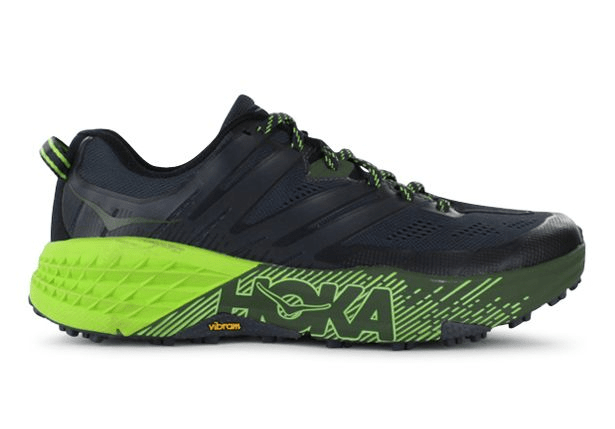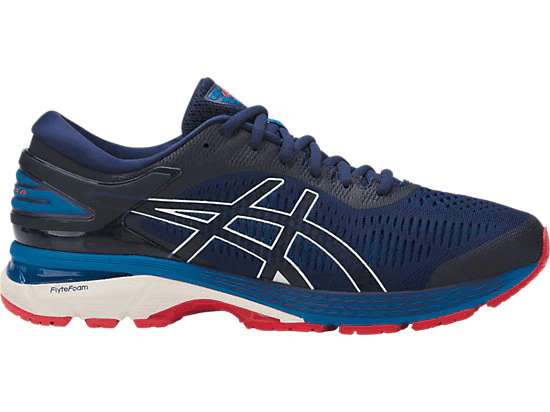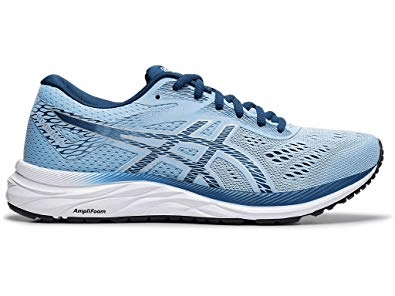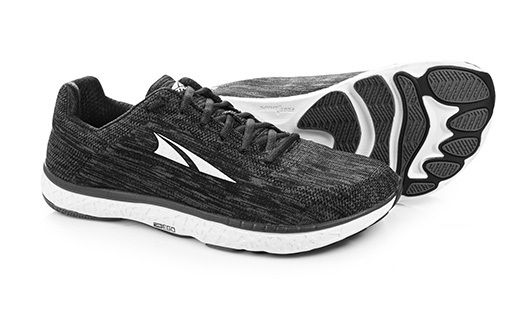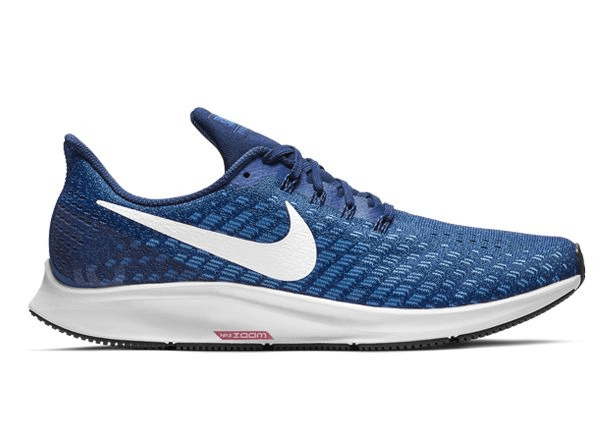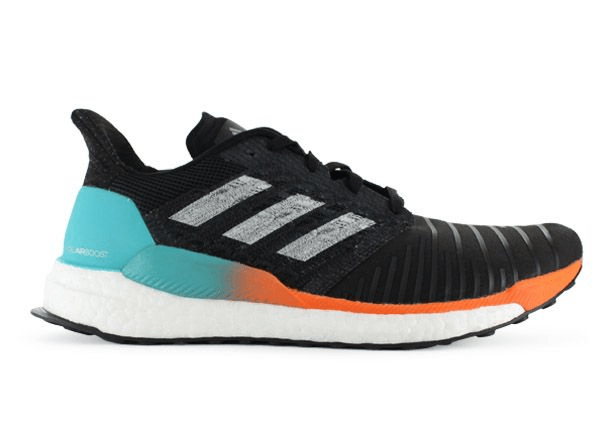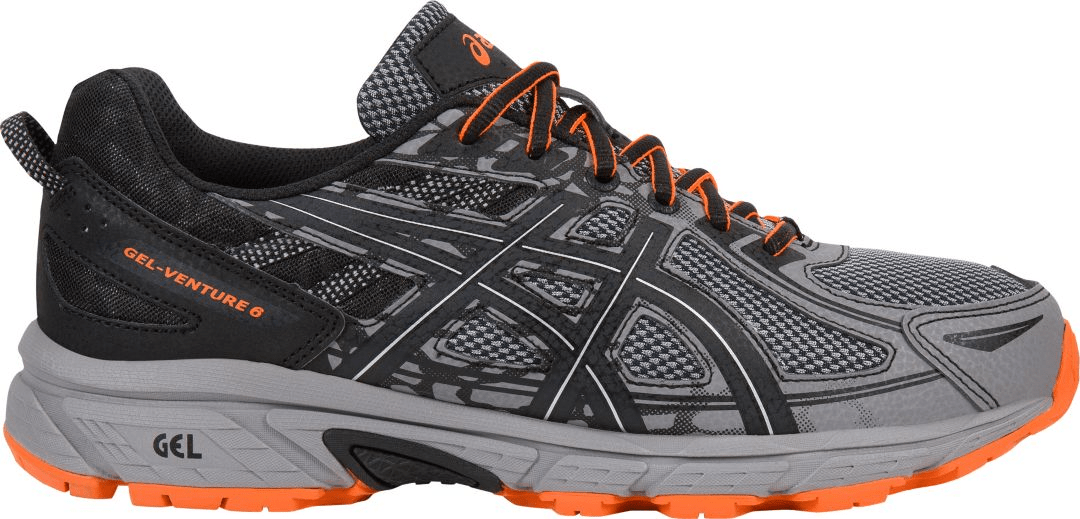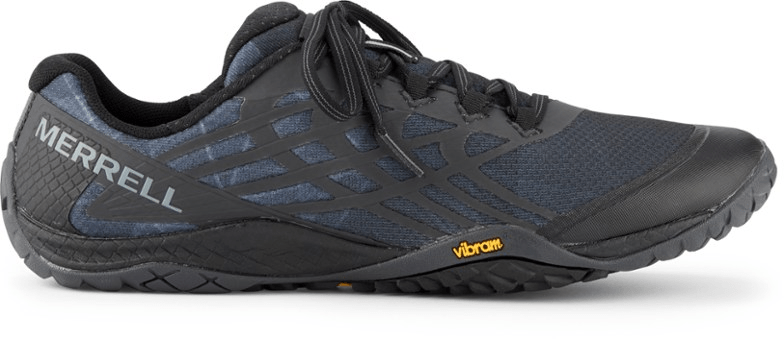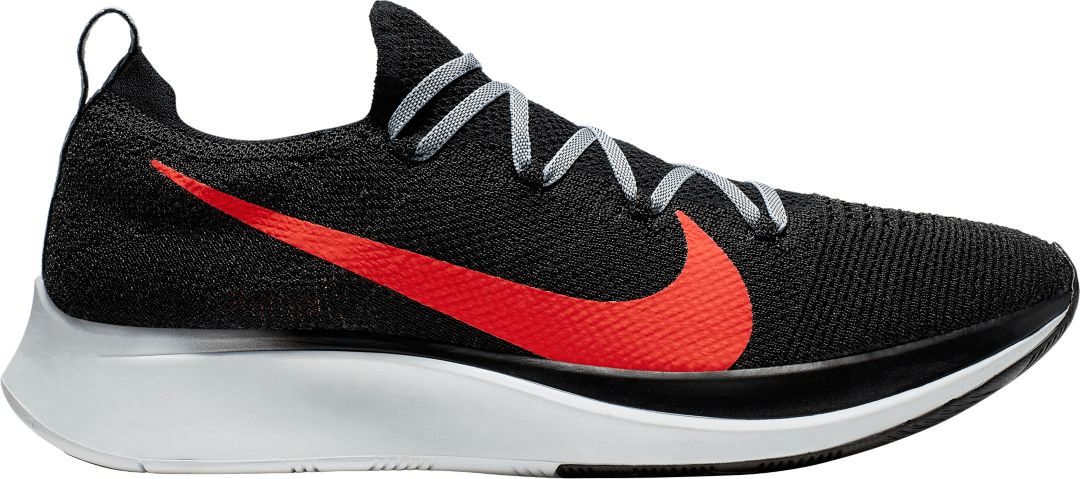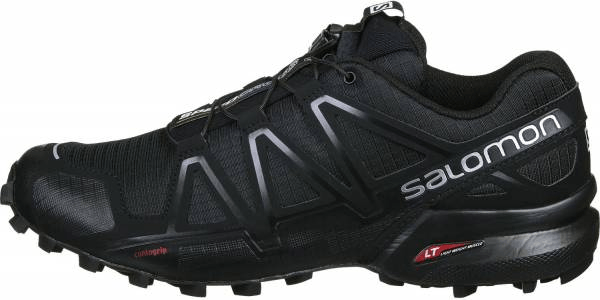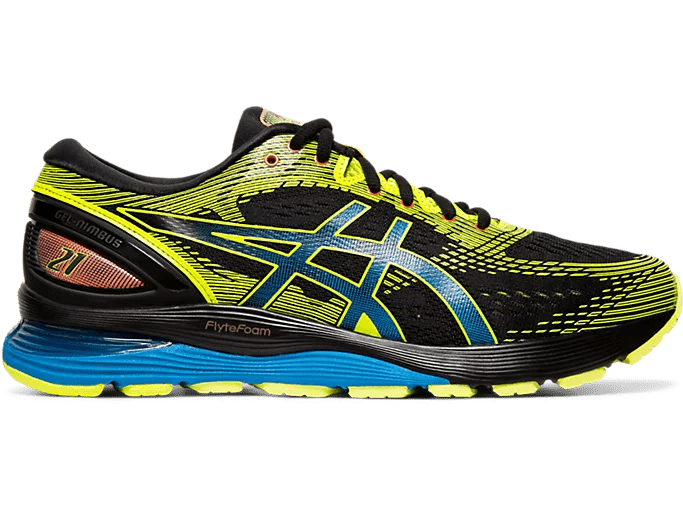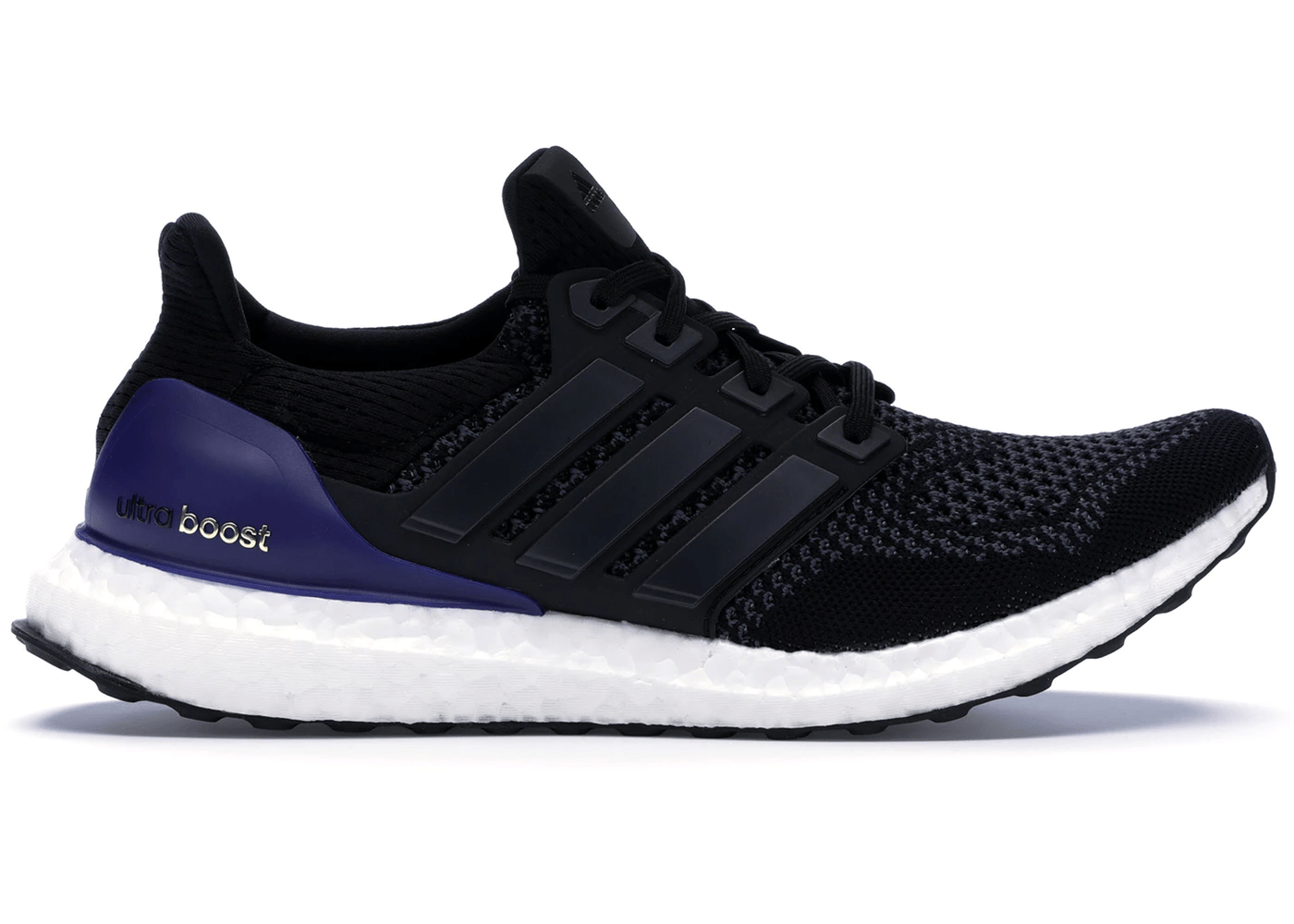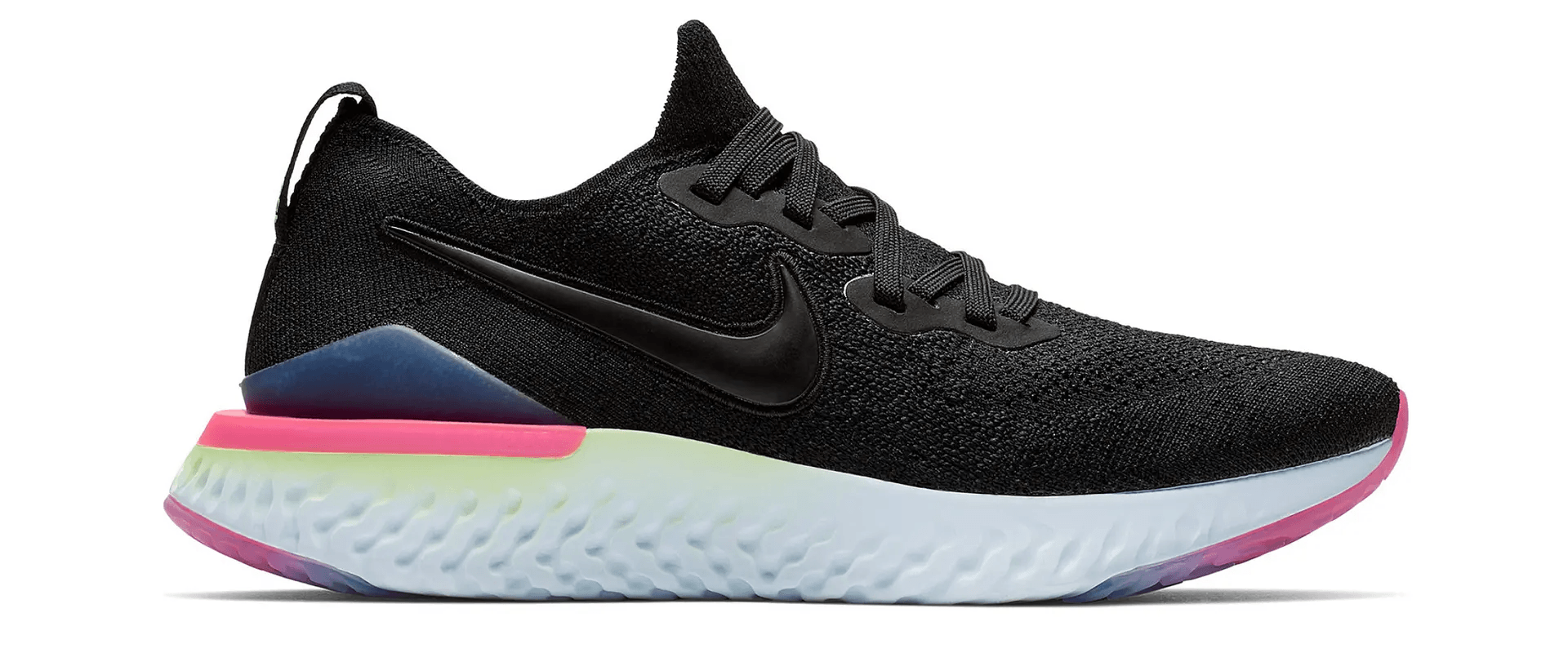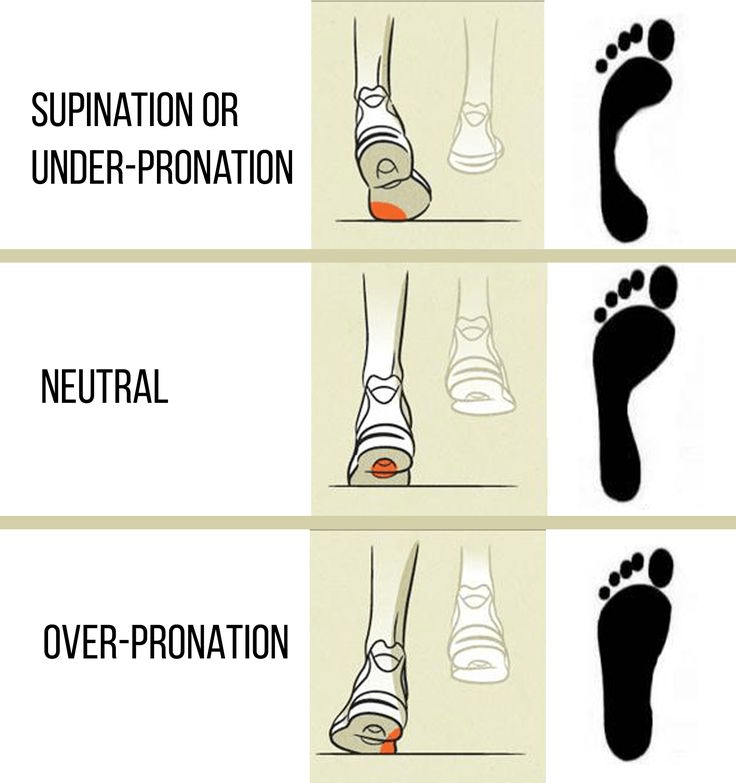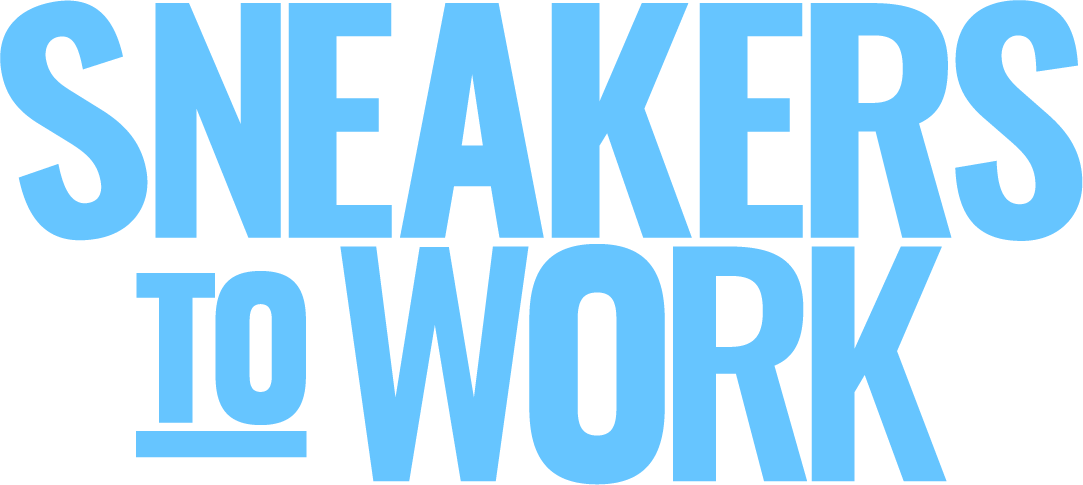Sneakers.co.id – Running shoes or running shoes is a basic need for everyone, especially for those of you who like to run. Just like other fashion items, In addition to function, we are often confused about choosing the running shoes that best suit our needs.
Confused to choose because of many factors from the price, convenience. Especially if the running shoes that we buy can make it stylish but still comfortable and durable.
Nah, for you who are still looking running shoes or running shoes the one that best suits you. Let's first identify the functions and recommendations of sneakers.co.id.
This review has been collected from various online and offline sources. At least a detailed review of these running shoes can help you choose the running shoes that you like the most, and according to need.
Sneakers.co.id will also answer the questions that usually arise before we choose and buy running shoes.
[lwptoc title=”list of contents” width=”auto” titleFontWeight=”extrabold” colorScheme=”light” backgroundColor=”” titleColor=””]
15 Running Shoes Best
Running Shoes – Under Armor HOVR Sonic 2
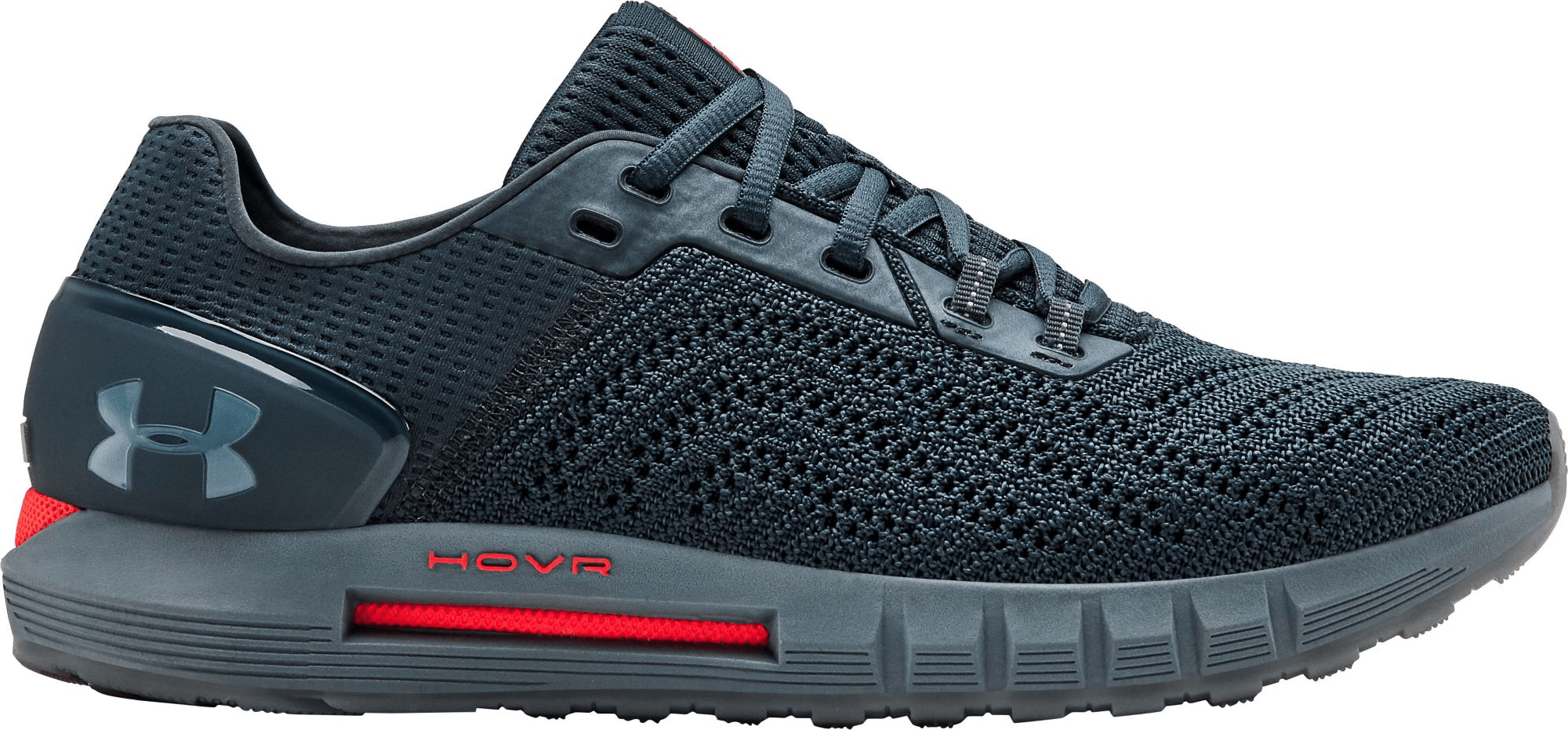
Running Shoes – Hoka One One Speedgoat 3
Running Shoes – Asics Gel Kayano 25
Running Shoes – Asics Gel Excite 6
Running Shoes – Altra escalante 1.5
Running Shoes – Brooks Ghost 11
Running Shoes – Pegasus Zoom Nike Air 35
Running Shoes – Adidas Solar Boost
Running Shoes – Asics Gel Venture 6
Running Shoes – Merrell Trail Glove 4
Running Shoes – Zoom Fly Flyknit Nike
Running Shoes – Salomon Speedcross 4
Running Shoes – Asics Gel Nimbus 21
Running Shoes – Adidas Ultra Boost
Running Shoes – Nike Epic React Flyknit 2
Anatomy of Running Shoes
Before you buy the best and most suitable running shoes for you. Better learn the basics of running shoes – top/upper, midsole, and outsole.
Upper Running Shoes
This is the top shoe that holds the feet in place. Usually made of various materials to provide foot durability, protection, and foot stability. The upper part of the shoe consists of several parts, and each part plays an important role in providing a comfortable and satisfying experience for runners.
Toe-box
This is the front platform of the shoe where the toes tread. This section is one of the factors you need to consider when it comes to fit shoes. Make sure to give your toes enough wiggle room and have enough room to swell on warm days.
Vamp
This is the upper front of the shoe that incorporates the toe box.
Shoe Tongue
This is a separate strip on the top of the shoe. The purpose of the tongue of this shoe is to protect the foot from pressure. It also helps users to easily put on and take off their shoes. Some tongues are light-padded while others come with thicker cushioning. There are also shoe models that don't use this traditional tongue. For example, we can find Asics Gel Lyte III shoes that don't have a shoe tongue which is generally in the middle of the upper.
Laces
Laces are also called shoestrings or shoelaces. They are used to secure and fasten shoes.
Rope Hole
Shoe holes are generally used to tie shoelaces. Most running shoes often have extra holes to tighten the heel area.
Heel collar
Often referred to as heel cuff, heel collar wraps around the ankle. Made of soft material and protects the feet comfortably. Of course this heel collar will ensure a perfect fit and provide added comfort.
Midsole
The middle is the material between the top and the outside. It is made of a spongy or gel material which aims to provide protection from the forces of pressure. The best running shoes feature midsole durable which is also light and comfortable for long term.
Outer sole
This part is the base of the shoe and is made of two materials – carbon rubber and hollow rubber. Carbon rubber is a more durable material while hollow rubber is lighter and more flexible.
Design outsole has a durable material for protection, tread for traction, and grooves for flexibility. Because the outsole makes direct contact with the ground, the outsole must be durable and grippy – anti slip.
Find Running Shoes Best for you
Choosing the best performing shoes is an important decision for every runner.
This is important :
Even if you are a casual runner and not an athlete you have to be aware that you have a unique body and biomechanics, So having careless running shoes is not the right decision.
In choosing the right pair of running shoes, there are a few different considerations to take into account. Apart from the price and level of running experience, The best running shoes must also improve running performance, without compromising comfort and safety.
Instead you get healthy by exercising or running, it could even be that you get injured easily because you choose the wrong running shoes.
Sneakers.co.id tries to help you narrow down your choice of running shoes from the many on the market. Moreover, dozens of new running shoes are introduced every month.
Of course it's getting confusing for runners like you to make buying decisions. Not to mention the production with many versions, also the entry shoe brand new in an increasingly saturated market.
Nah, sneakkers.co.id has collected reviews from socmed and the internet for you to weigh both the pros and cons of each brand and model of shoes., old and new.
So we hope this can be a comprehensive guide to the basics of shoes (measurement, price, use) to advanced information, such as shoe technology and expert opinion.
No less important, sneakers.co.id also provides several recommendations for running shoes that we report from various sources. Happy reading. 🙂
Trail Running Shoes vs Road Running Shoes
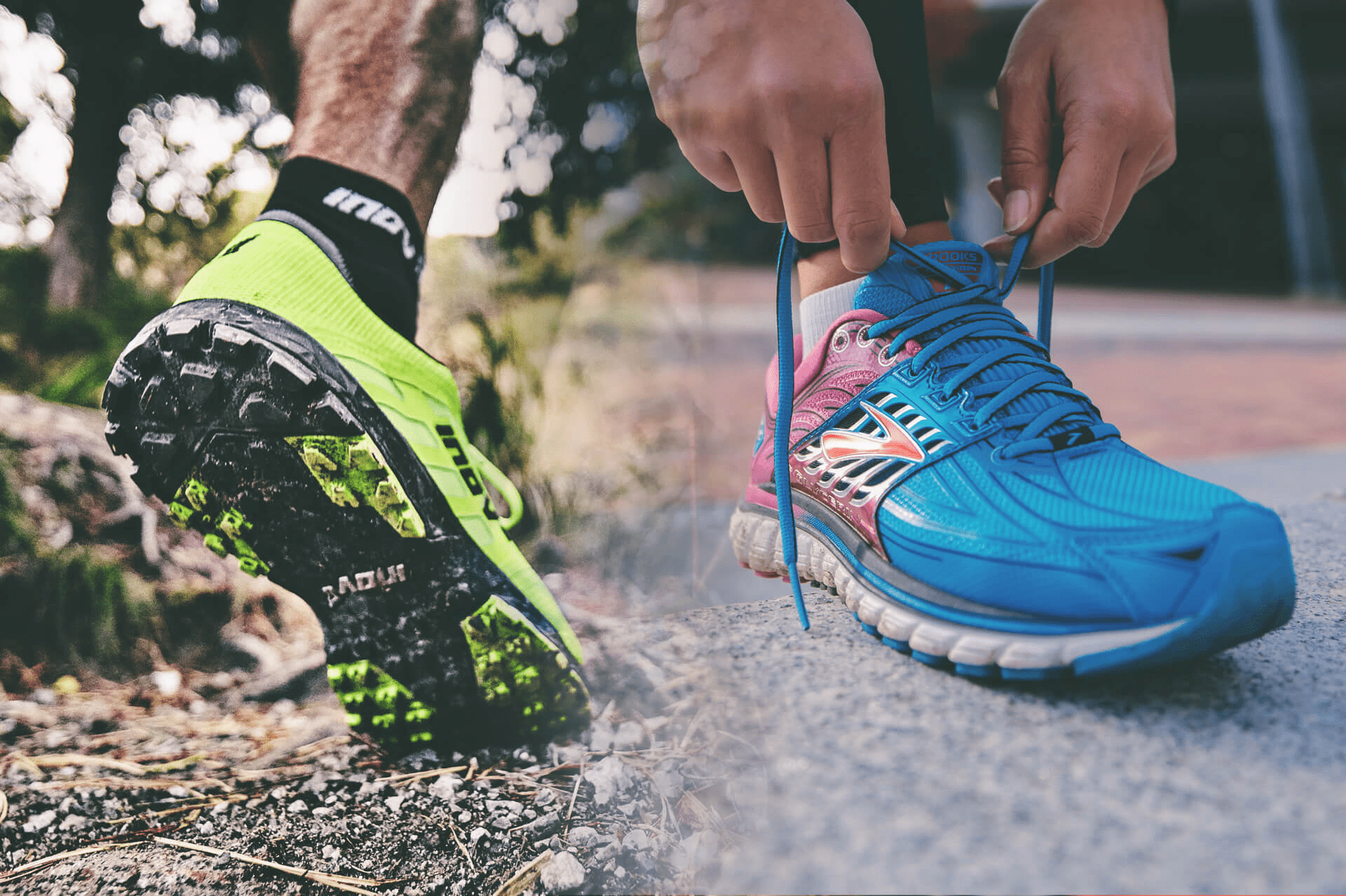
Shoe trail running and road running very similar in many ways, but the most notable difference is the design and material outsole-nya.
Trail running and road running shoes easily recognizable because the functions and uses are different. Sneakers trail running designed for use in uneven and moderately steep areas. While the shoes road running for roads that tend to be flat.
Then, what makes the difference? Come on, watch.
Shoe Design Construction
Shoe road runner usually smaller and lighter than running shoes trail. shoe type road running built to run on flat surfaces with minimal resistance such as gravel. So it's more responsive and prioritizes speed over protection.
Shoe road runner have a leaner structure because they deal with areas that tend to be flat. other than that, only shoes road runner professionals equipped with features and technology to enhance performance. Ordinary walking shoes will look normal.
On the other hand, running shoes trail looks more aggressive. They faced uneven terrain and found a steep surface, like a rock, will, and mud regularly.
This type of shoe prioritizes protection against debris and shock forces, as well as better landing control.
Shoe trai runner larger and heavier than a shoe road runner. Tthe technology implemented in these shoes is usually in the structure, like mudguard, waterproof layer, and foot cover.
Durability
The durability of the shoe is generally based on the materials used by each brand during the manufacturing process; However, shoes can also be strengthened according to the category.
Because of shoes road running not for use in steep areas, they are usually made with a lower durability limit but offer flexibility and speed.
Nah, On the other hand, if the shoes trail running designed to have superior durability so that it will not be damaged quickly when used to tread the world's steep roads, ceileh.
Traction and Grip
The structure of each shoe road running and shoes trail running also different. Trail shoes usually have an aggressive outsole pattern made of sticky rubber.
Because, this sole structure is very important for maintaining a person’s grip and grip force on uneven terrain (imagine a muddy surface, free rocks, and solid rocky paths).
Shoe trail the more technical ones often feature sharp soles so digging in snow and mud is easier to maintain soil balance and stability.
Otherwise, shoe road running has a flat surface made of abrasion-resistant rubber. This type of structure will do well on paved pavement, marble floor, treadmill and walking in general. Also has adequate traction and grip to handle flat ground, both dry and wet.
Arch Support: Is it needed?
Before you get confused about choosing the best running shoes, first understand your running style and walking style which should be a priority in running.
There are three types of gait, that is: overpronated, underpronated, and neutral.
Knowing your own biomechanics or pronation is very important. Because running in shoes that don't match your biomechanics, risk of injury and discomfort.
Arch support is a must in running, especially if you want to improve your running style.
Nah, quoted from various sources, Here are some types of shoes that have varying degrees of arch support to promote the best running style:
Neutral Running Shoes
If you have a neutral gait, safe! Basically, Your body is aligned and ready to run. Even, your curvature is just a little, so having a pair of neutral running shoes is comfortable enough.
This shoe type has less cushioning to allow for a flexible heel-to-toe transition. Support still available, but can already use this for movements like barefoot.
Runners with a supinated foot also benefit from wearing neutral shoes, because this type focuses more on bearing than correction.
Rolling the foot out can be hindered with plenty of cushioning on the sides, resulting in a smoother gait.
Stability Shoes
Stability shoes are recommended for those with low arches, so that overpronation occurs.
Overpronated feet have a tendency to roll inward during the heel-to-toe transition, but stable platforms can easily force it back on track, thanks to its bearing technology.
Stability shoes often have removable footbeds to accommodate orthotics. Orthotic inserts can be adjusted to complement your biomechanics, especially if the arch support on the shoe is still lacking.
Motion control shoes
If you are looking for the best corrective running shoes, look for nothing more than motion control shoes. This type of performance shoe is designed to limit excessive movement, which is the result of overpronation.
Runners with flat feet will appreciate a stiffer, thicker midsole made from premium cushioning and toughness as it stops the foot from over-rotating during the gait cycle.. Motion control shoes can also accommodate orthotics.
Gait analysis is very important, especially if you are a new runner.
Having the best running shoes won't do any good if they don't align with your body's biomechanics.
Remember that ignoring excessive leg rotation will not only result in discomfort.
But it also causes ankle and foot injuries, kneecap inflammation, torn ligaments and tendons, dry bone splints, bunion, Achilles tendonitis and various hip and lower back diseases.
Differences in the use of running shoes
Running shoes aren't just categorized by terrain or technology.
It is best to plan in advance what shoes we will buy, later only for practice or competition. So you can get shoes that fit your needs.
Nah, try asking yourself again, Now I need shoes for practice or want to take part in a competition.
Training Shoes / Training Shoes
Training shoes are usually standard running platforms with basic technology to support comfort, endorsement, traction, and protection.
Even, training shoes are more protective than series for competition and even more corrective. Training shoes are in high demand among fitness enthusiasts and beginners who run because they easily adapt to their structure.
Lighter training shoe models are preferred for speed training, whereas heavier shoes are commonly used for sports and gyms due to their cushioning and support features. Training shoes yang soft is also recommended for long distance running and recovery activities. You can use this type of shoes for jogging and daily sports activities.
Competition Sport Shoes
Competition shoes, (also call racing flats) built for speed. They are lighter and more minimal than training shoes.
Even, you can find a structure that fits the shape of the foot, responsive midsole and unique lug design.
Just some shoes running best dedicated to competition, because the majority of running audiences don't buy to compete.
Competition shoes also work well for high-speed running or speed training, especially if you want to break speed records on the track.
However, its technical features make you not recommended to use it for leisure activities other than sports. Lack of bearing (most likely reduce weight for better speed) make feet vulnerable to debris/gravel.
However, The full flexibility of this shoe is for those who want to catch up with running like barefoot.
Versatile Running Shoes
Some of the best running shoes are flexible enough to wear during practice and during race day. These platforms are usually preferred by experienced athletes as they want to get a feel for a familiar shoe before using it competitively.
However, amateurs are also starting to appreciate such flexibility, even if they have no plans to compete in the near future. In addition, it can be used as daily sports shoes.
The downside of versatile shoes is that there may be a reduction in all aspects, like convenience, endorsement, speed, and endurance.
Special Features of Running Shoes
Technology and innovation are the two factors that have catapulted shoe production running best to the next level.
Even, You're sure to see running shoes that have a variety of special features, such as a waterproof layer, energy conversion technology, 3D-inspired cleat design and quilted leather fitting system.
Each brand may have a different approach in presenting this particular running shoe, but it is undeniable that shoes running more than the price of ordinary shoes.
Nah, What are the features and innovations that we can get from running shoes??
Waterproof Shoes
Waterproof shoes are the answer to a runner's prayer during the rainy season or winter. Bad weather can really hamper running performance and make feet uncomfortable in wet and cold weather.
Fortunately, some of the best running shoes have a waterproof version, especially the special one for trail running shoes.
A waterproof material is usually incorporated on the upper and outer to manage moisture and keep water and other debris from entering the shoe cavity.
Waterproof shoes are by nature bigger and heavier due to the weather-resistant technology present in their structure. However, the lug pattern is also improved to be more aggressive and grippy, so maneuvering on wet surfaces won't be a hassle.
Triathlon Shoes
Shoe triathlon rather unique in that it is expected to perform well during cycling and running part of the triathlon.
Shouldn't just prioritize speed, but also reliable for pounding gravel, foot protection, grip and comfort.
Thanks to technology, shoe triathlon the current best exceeds expectations for both training and competition.
They are also incorporated with energy-converting materials so that the pressure force absorbed during use will not be wasted.
That energy is used to propel the runner forward, produce better speed without compromising foot protection.
Shoe triathlon must also be comfortable, given that the athlete will handle three activities (swimming, run & bicycle) before reaching the finish line.
Shoe Triathlon packed with lightweight cushioning for better underfoot comfort, with a snug fit that mimics the natural movement of the foot.
Running shoes it also has a stable base and a flexible handle to handle a variety of road surfaces.
Shoe Barefoot – barefoot
Running shoes Barefoot has a second skin contour that mimics the natural movement of the foot. Besides that it also has a bare-bones structure, which is likely to be of interest to people who want to pursue a natural running motion without cushioning.
However, The magic thing about the best barefoot running shoes is that they don't harm the feet, even on the trail.
We deserve to thank technology for its advanced solution features, like Vibram rubber. This rubber is popular because it offers an optimal mix of protection and ground contact without compromising durability and grip.
Barefoot shoes are not just for running. Popular also used in beachcombing, swimming, and climb mountains.
Freedom of movement is technically the plus point of this shoe, because it offers the benefits of better health and proper posture.
Fun Facts and Things about Running Shoes
Here are some things you might not know about running shoes:
- Adidas named after its founder, Adi Dassler, and the correct pronunciation of this brand is “Ah-Dee-Dass,” no “Uh-Dee-Duhs.”
- Several running brands are trying to incorporate electronics into their running shoe models and are failing. An example of this shoe model is Adidas 1, Puma RS-100 Computer Shoes and LA Gear CrossRunner shoes with red LED light on heel.
- ASICS is an abbreviation for a Latin phrase “healthy soul in a healthy body”, which means “a healthy soul in a healthy body.”
- Hoka One One was originally pronounced as "Ho-Kah Own-ay Own-ay." This is a Māori phrase meaning “to fly.” When the Deckers took over Hoka, the correct pronunciation is changed to “Ho-Kah Won Won. ”
- The average lifespan of a running shoe is 400 thousand.
- The average cost of running shoes is between $ 100 and $ 120.
- Atalanta, who is known for her muscular physique and beautiful appearance, is the Greek goddess of running.
- Fauja Singh is the oldest person to run a marathon. At age 101 year, he was able to join the London Marathon on 2012 with time 7 jam 49 minutes and 21 second.
- There are different ways to lace up depending on the specific foot problem. At least there is 12 Shoelaces and Knot Techniques even more.
- ideal, You have to buy shoes in the afternoon or evening.
Frequently Asked Questions
What running shoes best for beginners?
Beginners should buy sports shoes running which offers perfect balance with moderate cushioning, flexibility, and lightweight design.
Some recommendations include the Nike Revolution model 4, Kayano 25, and Brooks Ghost. Before you buy shoes, make sure to get the right one.
For ideas on what running shoes work best, You can read reviews online or ask some tips from your friends who like running or athletes.
How much does a good running shoe cost?
Rate-rate, a good pair of running shoes costs approx 1,5 million or more. But if you need trail running shoes, then you should prepare at least 2 million rupiah.
Trail shoes are more expensive because they are more durable and have more protective features than walking shoes.
How long do running shoes last?
There are several factors that affect the durability of running shoes. Runner weight and running style are common factors to consider.
Rate-rate, you have to buy new shoes after 400 until 500 thousand. Lightweight and minimalist running shoes usually last up to 300 thousand.
What is the lightest running shoe?
The Altra Vanish-R is one of the lightest running shoes on the market today. This is a minimalist running shoe designed for running on the street. Altra Vanish-R is a unisex shoe that offers breathable convenience and unparalleled comfort.
What are the best long distance running shoes for men?
Brooks Ghost 11, Gel Kayano 25, and Pegasus 35 are the best long distance running shoes for men. These running shoes offer durable and consistent cushioning, miles away. They also offer a level of comfort, endorsement, and great flexibility. This running shoe is also available in women's version.
What are the best road running shoes for women?
For running, the best road running shoe for women is Pegasus 35. To trail running, women should consider Asics Gel Venture 6.
Both running shoes are durable and comfortable to wear. other than that, these two shoes get positive reviews not only from female runners but also from male users.
What are the best running shoes for a marathon?
Brooks, Nike, and New Balance are some of the brands that produce sports shoes for marathons. Some shoe models to choose from are the Brooks Adrenaline GTS, Asics Gel Kayano, New Balance Kinvara, and New Balance 990.
However, You have to remember that you have to find the best marathon running shoe that suits your running style and body biomechanics.
Shoes that fit someone else may not suit you, so try on as many running shoes as you can, until you find the perfect one. Like a mate. sob.
What are the best cheapest running shoes?
Nike Downshifter 7 is one of the cheapest running shoes. This shoe is designed for runners with a neutral foot mechanism and is best for walking.
These shoes are available at a low price $ 60. There are also affordable running shoes from Adidas, Asics, and Skechers which you can buy below $ 100.
Or also get local Indonesian brand larrie shoes that are not inferior in quality. Usually at a low price even below 500 thousand rupiah.
What are the most expensive running shoes?
Altra Torin IQ and Altra Timp IQ are expensive running shoes. What makes it expensive is the smart technology they have – Altra IQ Technology.
This smart technology aims to help runners improve their performance by providing them with real-time feedback real time.
Feedback and suggestions that appear are based on data collected from the runner's actual movement. IQ technology is the latest innovation from Altra.
What are the most popular shoes for running on the streets?
Running shoes most popular in 2018 is the Nike Air Zoom Pegasus 35. These shoes have become very popular because of their design, performance, and durability.
Made of high quality materials and available at very reasonable prices. Another running shoe to try is the Ghost 11 from Brooks and Kayano 25 from Asics. The performance of these two running shoes is comparable to Pegasus 35.
Can the wrong running shoes hurt your knees?
Yes. Wrong pair of running shoes can make your knees hurt badly. The wrong shoes can also cause hip pain and other injuries.
It's important to know your running style and foot shape before buying a pair of running shoes.
Ask yourself some questions like “Am I a neutral runner?”, “Where I will run?”.
If you are a beginner, Don't buy expensive running shoes. There are shoes running cheap in today's market that is durable and reliable.
How do you put on your new running shoes?
If you have new running shoes, Here are some tips to keep in mind:
Running shoes should be comfortable and you should get one that fits your feet.
Put it on first and observe if the shoe rubs against the skin or it may feel uncomfortable. If it's too small, You can experience blisters and skin irritation.
Put on new shoes and do some walking before actually running. If the fit becomes uncomfortable or if you start to have blisters, consider returning the shoes and trying another pair.
Wear it for a shorter distance. Keep using short runs (no more than six miles) and replace it with old running shoes. This will allow your foot to adapt to the new cushioning and structure.


